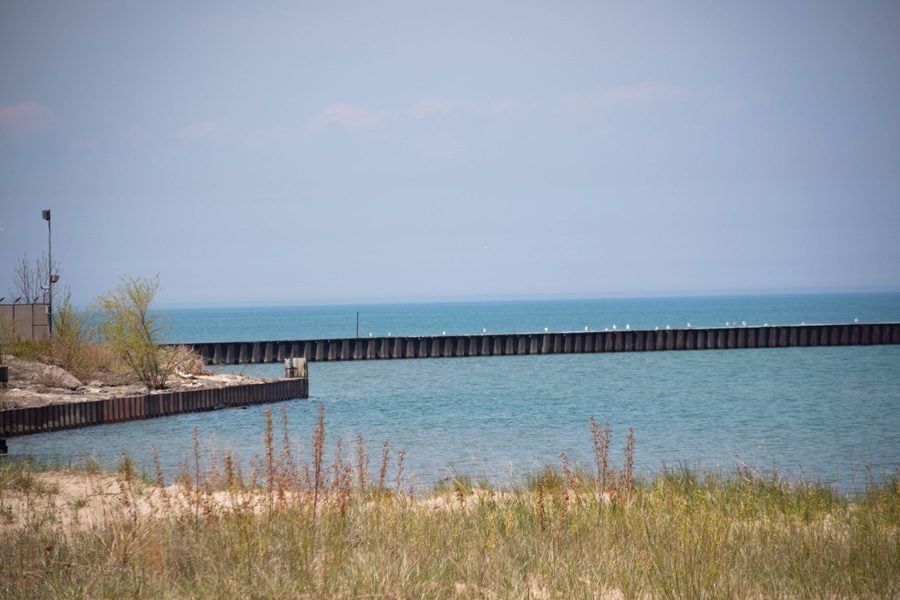Evanston reports safe drinking water in 2018
Alison Albelda/Daily Senior Staffer
Lake Michigan. Evanston receives its drinking water from Lake Michigan, which the report said has vastly improved in water quality over the past 25 years.
May 15, 2019
Evanston reported clean drinking water in 2018, according to its Water Utility Report.
The report — which tracked substances detected in Evanston’s drinking water in 2018 — stated the city’s tap water met all drinking water health standards set forth by the Environmental Protection Agency and the State of Illinois. The report cited no violations.
The report’s detected substances included fluoride, sulfate and hexavalent chromium, among other chemicals. Contaminants can come from several sources, according to the report, including urban storm runoff, livestock operations and pesticides. The main threats to Evanston’s source of drinking water, Lake Michigan, are pollution from air, rain and snow, as well as industrial runoff.
Darrell King, Evanston’s water production bureau chief, said he has no concerns about potential drinking water contamination.
“Our treatment process here at Evanston is very effective against the removal and reduction of contaminants,” King said. “The water that we put out is of high quality, and it meets and exceeds all safe drinking water standards.”
Water undergoes several processes once it leaves Lake Michigan and before it enters residents’ taps. First, water is taken from the lake and stored in wells by the shore. Then, low-lift pumps carry the water from the lake to a level where it can flow naturally to the treatment plant.
Once inside, the water receives treatments of chlorine, fluoride and aluminum sulfate. Chlorine is used for disinfection, fluoride to prevent dental decay and aluminum sulfate to form precipitates that will settle out suspended solids.
Next, the water undergoes various mixing processes which allow for sedimentation, where King estimates 80 to 90 percent of the particles will be removed. The other 10 to 15 percent of the particles will be removed via filtration, and the water will receive another dose of chlorine and a corrosion control chemical to guard against old lead pipes.
“Since 1992, Evanston has been feeding a corrosion control chemical,” King said. “In ’92, we actually exceeded the lead and copper rule action level of 15 parts per billion and since we’ve began feeding that chemical, our 90th percentile lead concentrations have been five or below.”
While King doesn’t anticipate any contamination, he said Evanston does have an emergency response plan in place should contamination occur. King said officials can notify the media, send out phone calls to residents and update social media with contamination alerts.
The report said the EPA considers Lake Michigan water quality vastly improved over the past 25 years. All 63 miles of Illinois shoreline are considered in good condition.
Email: [email protected]
Twitter: @emmaeedmund
Related Stories:
– District 65 drinking water contains high levels of lead, tests find


